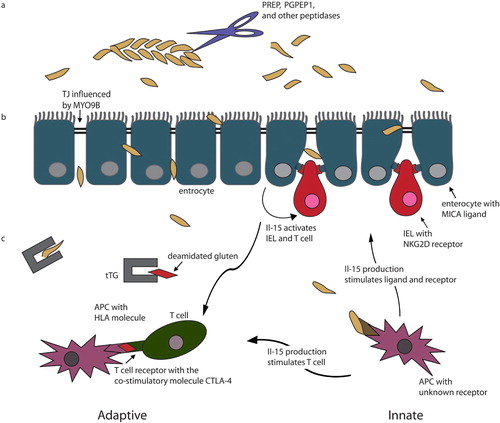Figures & data
Figure 1 Overview of the path taken by gluten. a) Gluten enters the lumen of the small intestine and is cleaved by several enzymes. b) It subsequently passes through the enterocytes in the intestinal barrier, which is impaired in celiac disease (CD) patients; myosin IXB (MYO9B) might play a role here by affecting the tight junctions. Enterocytes express the MICA ligand that binds to the NKG2D receptor on the intraepithelial lymphocytes (IEL). Besides this, enterocytes also produce IL‐15 capable of stimulating IELs and T cells. c) Both the innate and the adaptive immune system play a role. 1) Adaptive immune response: gluten is deamidated by tissue transglutaminase (tTG) in the lamina propria and elicits an immune response in genetically susceptible individuals who are also HLA‐DQ2.5 and/or ‐DQ8 positive. 2) Innate immune response: gluten induces the antigen‐presenting cell (APC) to produce Il‐15, which stimulates the production and interaction of the MICA ligand and the NKG2D receptor. IL‐15 also stimulates the adaptive immune response.
